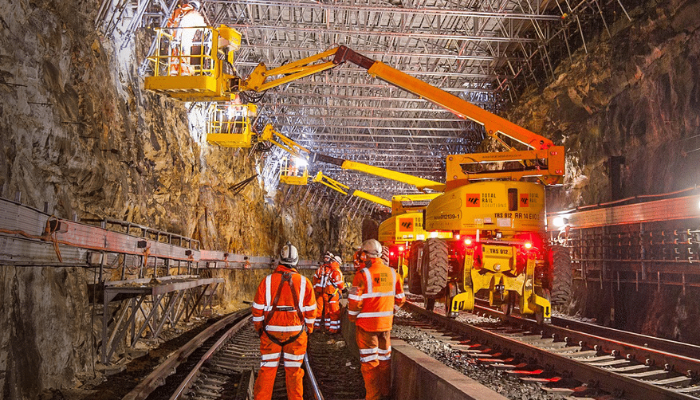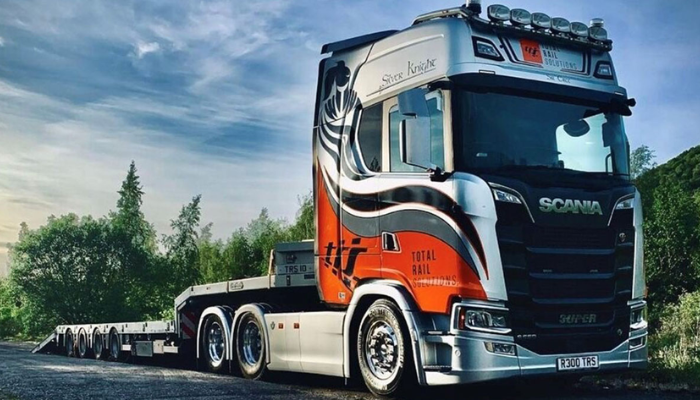The railway industry plays a crucial role in global transportation, facilitating the movement of people and goods with efficiency and reliability. To ensure seamless operations, rail networks require a comprehensive approach encompassing design, construction, maintenance, and regulatory compliance. This is where total rail solutions come into play. These all-inclusive services streamline the development and upkeep of railway systems, enhancing safety, efficiency, and sustainability. In this guide, we will explore the key components of total rail solutions and how they contribute to a robust and future-proof railway infrastructure.
The Importance of Total Rail Solutions in Modern Infrastructure
Ensuring Operational Efficiency and Reliability
Total rail solutions provide a holistic approach to railway infrastructure, integrating multiple services under a single framework. From project planning to execution, these solutions streamline complex processes, reducing downtime and minimizing delays. Advanced technology, such as real-time monitoring systems and predictive maintenance, further enhances reliability, ensuring smooth rail operations.
Moreover, efficient railway systems are essential for economic growth, as they facilitate trade and connectivity between regions. By adopting total rail solutions, operators can optimize resources, improve service quality, and meet the growing demands of passengers and businesses alike.
Enhancing Safety and Compliance
Safety is paramount in railway operations, and total rail solutions prioritize regulatory compliance and risk mitigation. Implementing comprehensive safety protocols, routine inspections, and automated alert systems helps prevent accidents and improve overall security. In addition, adherence to industry regulations, such as those set by the Federal Railroad Administration (FRA) and the European Union Agency for Railways (ERA), ensures legal compliance and reduces liabilities.
Key Components of Total Rail Solutions
Railway Design and Planning
The foundation of an efficient railway system lies in meticulous design and planning. This involves assessing geographical conditions, conducting feasibility studies, and incorporating modern engineering techniques. By leveraging innovative software and simulation tools, engineers can create optimized rail layouts that enhance speed, reduce wear and tear, and minimize environmental impact.
Incorporating smart rail technology, such as automated signaling and AI-driven route optimization, further refines the planning process. These advancements not only improve efficiency but also enhance safety by reducing human error.
Construction and Infrastructure Development
Railway construction encompasses track laying, bridge building, tunnel excavation, and station development. High-quality materials and precision engineering are essential to creating durable and resilient rail networks. Modern construction techniques, such as prefabrication and modular rail components, accelerate project completion while maintaining structural integrity.
Additionally, sustainable construction practices, including the use of recycled materials and energy-efficient solutions, contribute to eco-friendly railway development. As environmental concerns continue to rise, green rail infrastructure is becoming a priority in total rail solutions.
Advanced Railway Maintenance Strategies
Predictive and Preventive Maintenance
Railway maintenance is crucial to preventing disruptions and extending the lifespan of infrastructure. Predictive maintenance employs sensors and data analytics to detect potential issues before they escalate into costly failures. By analyzing wear patterns and performance metrics, railway operators can schedule timely repairs and replacements.
Preventive maintenance, on the other hand,total rail solutions involves routine inspections and servicing to address minor faults proactively. Techniques such as ultrasonic rail testing and thermal imaging ensure that tracks, signals, and rolling stock remain in optimal condition.
Modernization and Upgrades
With rapid technological advancements, railway systems must continuously evolve to stay competitive. Modernization initiatives, such as electrification, digital signaling, and high-speed rail integration, enhance efficiency and passenger experience. Implementing smart infrastructure, such as IoT-enabled monitoring systems, provides real-time insights into operational performance, allowing for swift decision-making.
Digital Transformation in Railway Operations

Smart Railway Technologies
The integration of digital technologies is revolutionizing railway operations.total rail solutions Artificial intelligence (AI) and machine learning (ML) optimize scheduling, maintenance, and safety protocols. Real-time data analytics enable predictive decision-making, reducing delays and enhancing overall service quality.
Automation, including driverless trains and automated ticketing systems, is also gaining traction. These innovations minimize human intervention, lower operational costs, and improve passenger convenience.
Cybersecurity and Data Protection
As railway systems become more interconnected, cybersecurity threats pose significant risks. Total rail solutions encompass robust cybersecurity measures to protect critical infrastructure from cyberattacks. Implementing encrypted communication networks, intrusion detection systems, and regular security audits ensures data integrity and system reliability.
The Future of Total Rail Solutions
Sustainability and Environmental Initiatives
The future of railway infrastructure is increasingly focused on sustainability. Green initiatives, such as hydrogen-powered trains, solar-powered stations, and regenerative braking systems, are reducing the environmental footprint of rail transportation. By adopting energy-efficient practices and renewable energy sources, rail operators contribute to global climate goals.
Furthermore, investments in high-speed rail and urban transit solutions promote eco-friendly commuting, reducing reliance on fossil fuels and mitigating traffic congestion in metropolitan areas.
Expanding Global Rail Networks
As demand for efficient transportation grows, countries are expanding their rail networks to enhance connectivity. High-speed rail projects, cross-border collaborations, and smart city integrations are shaping the future of global railway infrastructure. Total rail solutions play a crucial role in ensuring seamless project execution and long-term operational success.
Conclusion
Total rail solutions are the backbone of modern railway infrastructure, offering end-to-end services that enhance efficiency, safety, and sustainability. From meticulous planning and cutting-edge construction to advanced maintenance and digital transformation, these solutions streamline railway operations for a seamless transportation experience. As the industry embraces technological advancements and eco-friendly initiatives, total rail solutions will continue to drive innovation and progress in global rail networks.
Frequently Asked Questions (FAQs)
- What are total rail solutions?
Total rail solutions encompass all services related to railway infrastructure, including design, construction, maintenance, and safety compliance. - Why are total rail solutions important?
They ensure operational efficiency, safety, and sustainability while minimizing downtime and maintenance costs. - What technologies are used in modern railway systems?
AI, IoT, predictive analytics, digital signaling, and automated maintenance systems enhance railway efficiency and safety. - How does predictive maintenance benefit railways?
It prevents unexpected failures, reduces downtime, and extends the lifespan of rail components through data-driven insights. - What role does cybersecurity play in railway operations?
Cybersecurity safeguards railway networks from cyber threats, ensuring data integrity and system reliability. - How do total rail solutions contribute to sustainability?
They incorporate green initiatives like electrification, hydrogen trains, and energy-efficient rail infrastructure. - What are the key challenges in railway infrastructure development?
Challenges include funding constraints, regulatory compliance, technological integration, and environmental concerns. - What is the future of high-speed rail?
High-speed rail networks are expanding globally, improving connectivity and reducing travel time between major cities. - How does digital transformation impact railways?
It enhances efficiency through automation, real-time monitoring, and smart railway technologies. - How can rail operators ensure safety and compliance?
By implementing rigorous safety protocols, regular inspections, and adherence to industry regulations.





